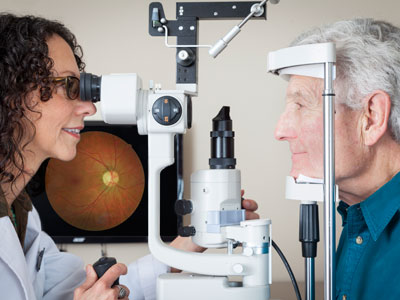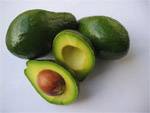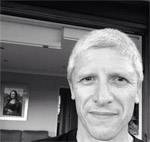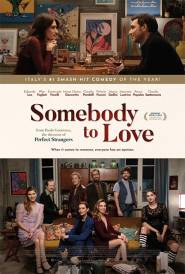Dr Aaron Yeung Macula Month Interview

Three Simple Ways to Reduce the Risk of Macular Degeneration
Every day, more and more Australians are diagnosed with sight-threatening age-related macular degeneration or AMD – something that's unfortunately inevitable, according to Vision Eye Institute ophthalmologist Dr Aaron Yeung.
"Age is one of the greatest risk factors for AMD and our population is ageing," Dr Yeung explains. "That's a simple fact we can't do much about. But, what we can do is make sure people are aware of this increasingly common condition and also understand that everyone is at risk.
"The biggest concern patients have is whether they will go blind. AMD only affects central vision and leaves peripheral vision intact, so AMD-related blindness is different to the image people typically associate with going blind – that is, complete blackness. Yet, it can still be severely debilitating and lead to legal blindness."
On the plus side, there are three really simple measures to reduce your overall risk, says Dr Yeung.
"First and foremost is having regular eye checks with an optometrist. I really can't stress how important these are. AMD is one of those conditions where the symptoms aren't usually noticed until it's quite advanced. Luckily these days, optometrists have access to sophisticated technology that can image the retina, including the macula, and show up areas that don't look normal. If that happens, patients are referred to a retinal ophthalmologist like myself for further investigation. As a bonus, many optometrists bulk bill regular eye examinations so you won't have any out-of-pocket costs. I also encourage self-monitoring your vision at home once a week. Simply cover each eye separately and look at a straight edge such as a door or window. If you notice any wavy or missing parts, visit your optometrist immediately."
Secondly, stop or reduce smoking. "If you smoke, you really need to consider stopping. It's no secret that smoking harms our bodies on a number of levels – eye health is one such area, with smokers significantly more likely to develop AMD. No smoking would be ideal, but even trying to reduce the amount of smoking by half, as an initial target, would be good. Supporting patients to do this is a really important part of any AMD treatment plan – we all know how hard it can be for people to give up smoking, especially if they've been doing it for years."
 Dr Yeung says that paying attention to your diet is another key part of AMD prevention and management. "There are specifically designed multivitamins available, but these carry a cost and consuming a balanced diet containing leafy greens, orange-coloured vegetables and fish high in omega-3 will be just as good. I'd be concerned about patients taking any type of multivitamin and thinking they don't have to worry about what they're eating.
Dr Yeung says that paying attention to your diet is another key part of AMD prevention and management. "There are specifically designed multivitamins available, but these carry a cost and consuming a balanced diet containing leafy greens, orange-coloured vegetables and fish high in omega-3 will be just as good. I'd be concerned about patients taking any type of multivitamin and thinking they don't have to worry about what they're eating.
"AMD comes in dry and wet forms. While we can't cure either type, it's possible to slow progression of wet AMD with eye injections and/or photodynamic laser therapy. However, patients may still experience a decline in their vision despite treatment. There's no available treatment option for dry AMD, which represents around ninety percent of all cases. For these patients, dietary improvement and quitting smoking are critical. To make matters even more complicated, it's possible for patients to develop signs of both types of AMD."
Dr Yeung also stresses that recent reports of success with stem cell therapy in patients with AMD should be treated with cautious optimism. I think it's great that people are doing research in this area. The concern is that it's very early days and we're still trying to establish the safety of stem cell treatment. That's why trials to date have only involved a few patients – all of whom have very advanced disease and little-to-no vision. We will hopefully have a much better idea three to five years down the line, once we have studies involving greater patient numbers. It's exciting news, but it's important to remember that, at present, intravitreal injections provide the best outcomes for patients with AMD."
www.Visioneyeinstitute.com.au
"Age is one of the greatest risk factors for AMD and our population is ageing," Dr Yeung explains. "That's a simple fact we can't do much about. But, what we can do is make sure people are aware of this increasingly common condition and also understand that everyone is at risk.
"The biggest concern patients have is whether they will go blind. AMD only affects central vision and leaves peripheral vision intact, so AMD-related blindness is different to the image people typically associate with going blind – that is, complete blackness. Yet, it can still be severely debilitating and lead to legal blindness."
On the plus side, there are three really simple measures to reduce your overall risk, says Dr Yeung.
"First and foremost is having regular eye checks with an optometrist. I really can't stress how important these are. AMD is one of those conditions where the symptoms aren't usually noticed until it's quite advanced. Luckily these days, optometrists have access to sophisticated technology that can image the retina, including the macula, and show up areas that don't look normal. If that happens, patients are referred to a retinal ophthalmologist like myself for further investigation. As a bonus, many optometrists bulk bill regular eye examinations so you won't have any out-of-pocket costs. I also encourage self-monitoring your vision at home once a week. Simply cover each eye separately and look at a straight edge such as a door or window. If you notice any wavy or missing parts, visit your optometrist immediately."
Secondly, stop or reduce smoking. "If you smoke, you really need to consider stopping. It's no secret that smoking harms our bodies on a number of levels – eye health is one such area, with smokers significantly more likely to develop AMD. No smoking would be ideal, but even trying to reduce the amount of smoking by half, as an initial target, would be good. Supporting patients to do this is a really important part of any AMD treatment plan – we all know how hard it can be for people to give up smoking, especially if they've been doing it for years."
 Dr Yeung says that paying attention to your diet is another key part of AMD prevention and management. "There are specifically designed multivitamins available, but these carry a cost and consuming a balanced diet containing leafy greens, orange-coloured vegetables and fish high in omega-3 will be just as good. I'd be concerned about patients taking any type of multivitamin and thinking they don't have to worry about what they're eating.
Dr Yeung says that paying attention to your diet is another key part of AMD prevention and management. "There are specifically designed multivitamins available, but these carry a cost and consuming a balanced diet containing leafy greens, orange-coloured vegetables and fish high in omega-3 will be just as good. I'd be concerned about patients taking any type of multivitamin and thinking they don't have to worry about what they're eating. "AMD comes in dry and wet forms. While we can't cure either type, it's possible to slow progression of wet AMD with eye injections and/or photodynamic laser therapy. However, patients may still experience a decline in their vision despite treatment. There's no available treatment option for dry AMD, which represents around ninety percent of all cases. For these patients, dietary improvement and quitting smoking are critical. To make matters even more complicated, it's possible for patients to develop signs of both types of AMD."
Dr Yeung also stresses that recent reports of success with stem cell therapy in patients with AMD should be treated with cautious optimism. I think it's great that people are doing research in this area. The concern is that it's very early days and we're still trying to establish the safety of stem cell treatment. That's why trials to date have only involved a few patients – all of whom have very advanced disease and little-to-no vision. We will hopefully have a much better idea three to five years down the line, once we have studies involving greater patient numbers. It's exciting news, but it's important to remember that, at present, intravitreal injections provide the best outcomes for patients with AMD."
www.Visioneyeinstitute.com.au
Interview with Dr Aaron Yeung, ophthalmologist from Vision Eye Institute
Question: What message do you hope to spread for Macula Month?
Dr Aaron Yeung: There are three simple ways to reduce the risk of macular degeneration, an increasingly common condition that can affect anyone.
Question: What is Macular Degeneration?
Dr Aaron Yeung: Macular degeneration (also called age-related macular degeneration or AMD) is the leading cause of blindness and severe vision loss in Australia. The name actually refers to a group of chronic, degenerative diseases of the retina – in particular the macula, which is responsible for central and fine-detail vision. Because this is a painless condition and peripheral vision is not affected, many people are not aware that they have AMD until the disease is in the advanced stages.
Once advanced, AMD can be classified into wet and dry forms. Dry macular degeneration (also called atrophic) is the most common type. Here the macular tissue thins (atrophies) and eventually stops functioning properly. Vision loss is insidious and gradual. Wet macular degeneration (also called neovascular or exudative) affects about 10% of people with advanced AMD. Abnormal blood vessels grow beneath the macula and can leak fluid or bleed, causing the macula to swell. Vision loss is sudden and more noticeable than with dry AMD.
Question: Can you share three simple ways people can reduce their risk of Macular Degeneration?
Dr Aaron Yeung: Have regular eye checks
Eat a healthy diet containing leafy greens, orange-coloured vegetables and fish high in omega-3s
Stop smoking
 Question: What are the signs and symptoms of Macular Degeneration?
Question: What are the signs and symptoms of Macular Degeneration?
Dr Aaron Yeung: Blurred vision
Shadows or missing areas of vision
Distorted vision
Straight lines appear wavy
Difficulty discerning colours
Poor adaption to dark conditions (from brighter environments)
Numbers and letters appear jumbled
Question: How is Macular Degeneration treated?
Dr Aaron Yeung: AMD cannot be cured – it requires ongoing monitoring and management to slow disease progression and try to preserve remaining vision.
Treatment options for wet AMD include eye injections and photodynamic therapy.
There is no commercially available treatment for dry AMD at this time.
Question: How can we protect our eyes, on a daily basis?
Dr Aaron Yeung: Eat a healthy diet containing leafy greens, orange-coloured vegetables and fish high in omega-3s
Stop smoking
Wear good-quality sunglasses
Interview by Brooke Hunter
Dr Aaron Yeung: There are three simple ways to reduce the risk of macular degeneration, an increasingly common condition that can affect anyone.
Question: What is Macular Degeneration?
Dr Aaron Yeung: Macular degeneration (also called age-related macular degeneration or AMD) is the leading cause of blindness and severe vision loss in Australia. The name actually refers to a group of chronic, degenerative diseases of the retina – in particular the macula, which is responsible for central and fine-detail vision. Because this is a painless condition and peripheral vision is not affected, many people are not aware that they have AMD until the disease is in the advanced stages.
Once advanced, AMD can be classified into wet and dry forms. Dry macular degeneration (also called atrophic) is the most common type. Here the macular tissue thins (atrophies) and eventually stops functioning properly. Vision loss is insidious and gradual. Wet macular degeneration (also called neovascular or exudative) affects about 10% of people with advanced AMD. Abnormal blood vessels grow beneath the macula and can leak fluid or bleed, causing the macula to swell. Vision loss is sudden and more noticeable than with dry AMD.
Question: Can you share three simple ways people can reduce their risk of Macular Degeneration?
Dr Aaron Yeung: Have regular eye checks
Eat a healthy diet containing leafy greens, orange-coloured vegetables and fish high in omega-3s
Stop smoking
 Question: What are the signs and symptoms of Macular Degeneration?
Question: What are the signs and symptoms of Macular Degeneration? Dr Aaron Yeung: Blurred vision
Shadows or missing areas of vision
Distorted vision
Straight lines appear wavy
Difficulty discerning colours
Poor adaption to dark conditions (from brighter environments)
Numbers and letters appear jumbled
Question: How is Macular Degeneration treated?
Dr Aaron Yeung: AMD cannot be cured – it requires ongoing monitoring and management to slow disease progression and try to preserve remaining vision.
Treatment options for wet AMD include eye injections and photodynamic therapy.
There is no commercially available treatment for dry AMD at this time.
Question: How can we protect our eyes, on a daily basis?
Dr Aaron Yeung: Eat a healthy diet containing leafy greens, orange-coloured vegetables and fish high in omega-3s
Stop smoking
Wear good-quality sunglasses
Interview by Brooke Hunter
Have You Seen This?
MORE









